Costume collection from Japanese style photography studio HAGOROMOYA | Experience wearing the beauty of Japanese style in Kyoto

HAGOROMOYA is a Japanese-style photo studio that opened in 2024. It is a recommended facility for those who want to wear a kimono while sightseeing in Kyoto and take a special photo. At HAGOROMOYA, you can take photos wearing traditional Japanese costumes. In this article, we will introduce the costume collection at HAGOROMOYA.
What is HAGOROMOYA?
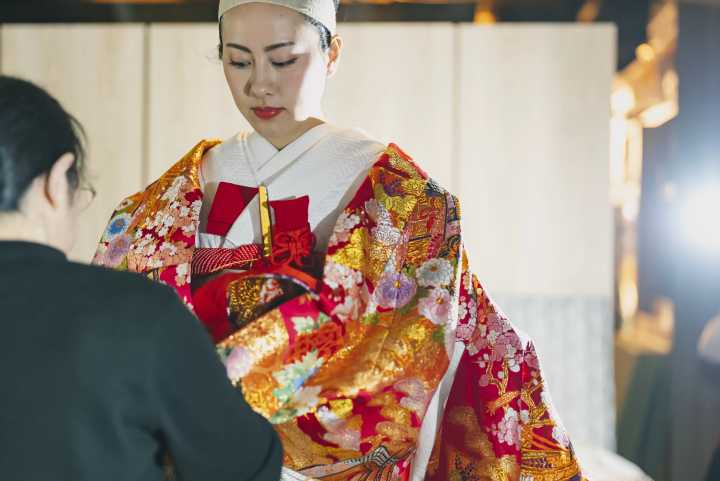
HAGOROMOYA is a photo studio specializing in Japanese clothing that opened in Higashiyama Ward, Kyoto City in 2024. It is located near historical tourist attractions such as Gion, Yasaka Shrine, and Kiyomizu-dera Temple, and is easily accessible from Kyoto's major tourist spots.
HAGOROMOYA was established based on over 50 years of experience in supporting the Japanese wedding industry. Our staff has extensive experience in the wedding industry and handles everything from dressing, hair styling, and photography.
Hagoromoya Photo Plan

HAGOROMOYA's basic photo plans include the following:
・Ooku Plan・Furisode Plan・Shogun Plan・Kimono Plan・Children's Plan
We have a wide variety of costumes available to match each plan. Let's take a closer look at what kind of costumes you can wear.
Wear in the OOKU PLAN [Uchikake]
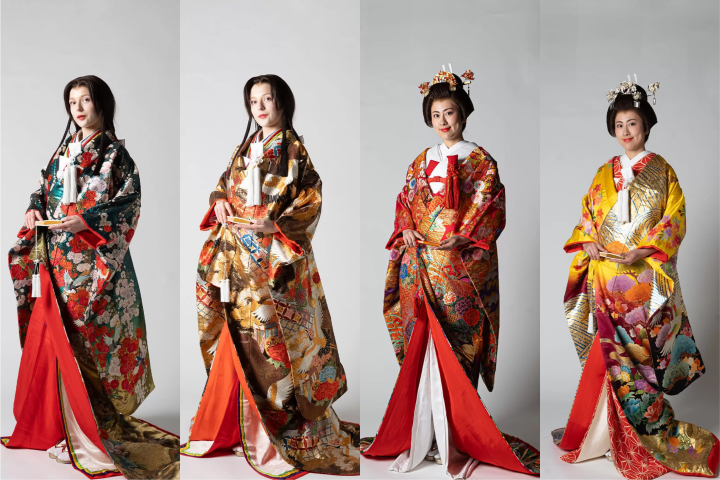
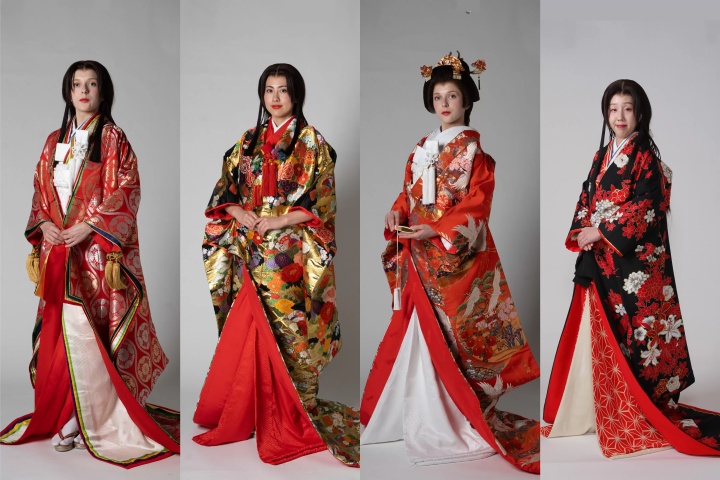
OOKU PLAN: From the left, Shirogane Kikumon Junihitoe-Style, A Profusion of Flowers & Coffered Ceiling, Courtly Scenery Design & Scenic Beauty, Red and White Flower Irises
First, we will introduce the uchikake of the OOKUPLAN. The OOKU PLAN is the main plan of HAGOROMOYA. You can take photos wearing a gorgeous uchikake like the Ooku. In addition to being able to choose your costume freely , you can also enjoy coordinating it more dazzlingly with kakeshita and hairpins.
The background, costumes, and shooting data are more comprehensive than the Uchikake plan introduced later.
Wear in the FURISODE STROLL PLAN [furisode]
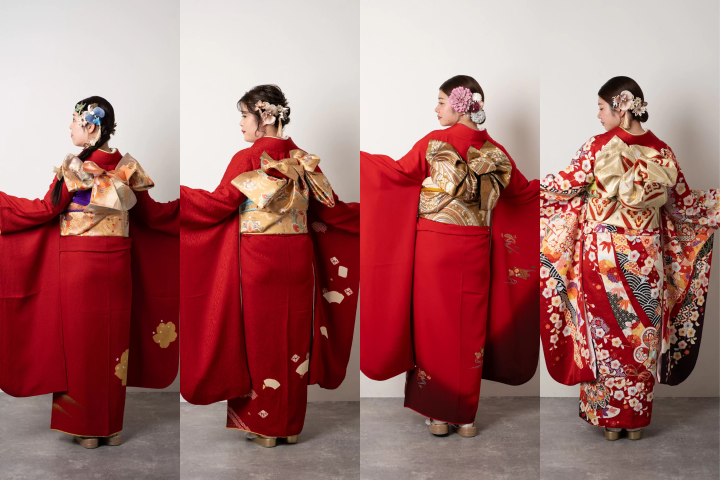


Furisode are characterized by long sleeves and gorgeous patterns, and are still worn today as the first formal attire for coming-of-age ceremonies, weddings, etc. In the FURISODE STROLL PLAN, you can choose your favorite pattern from a wide selection of furisode and take photos.
Wearing in the SHOGUN PLAN [Armor]
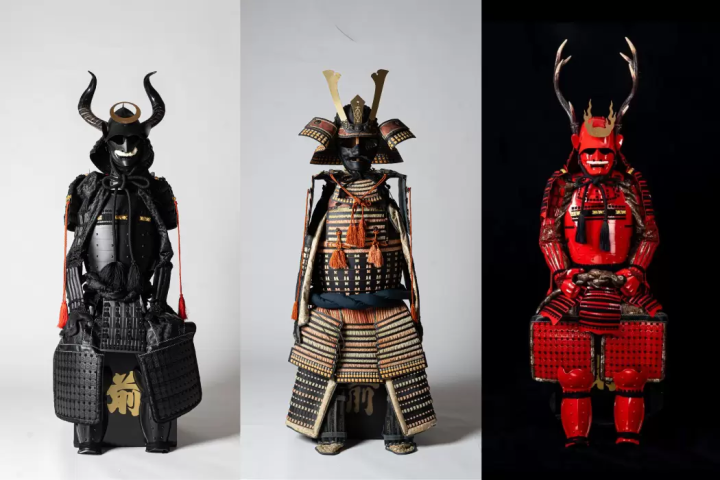
Armor is the protective gear worn by Japanese samurai in battle, and is made primarily from iron and leather. Warlords in the Sengoku period expressed their individuality through the design of their armor. HAGOROMOYA's armor is carefully reproduced by skilled craftsmen to resemble the armor of that time.
Wear in the KIMONO PLAN [Monfuku]

Haori-Hakama is a traditional Japanese formal attire for men, and is also called monfuku. It is a combination of a haori (a traditional outerwear) and hakama (a traditional skirt). It was historically worn by samurai as formal attire, and is now worn at weddings and coming-of-age ceremonies.
Wear in the KIMONO PLAN [Hitatare]
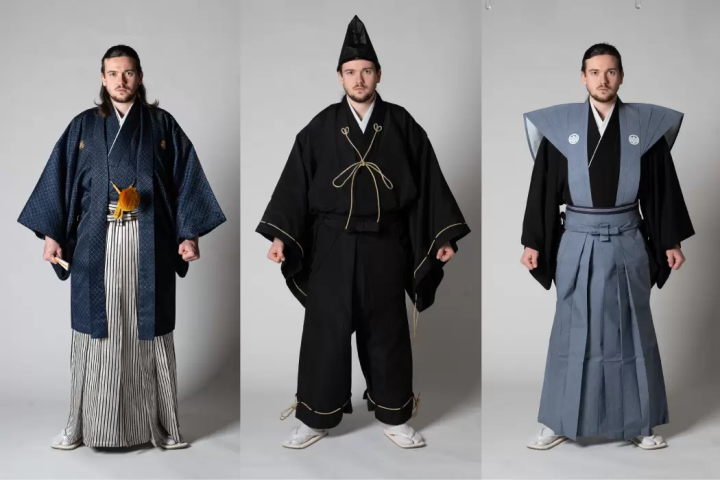
Hitatare is one of Japan's traditional costumes, and is said to have originated from clothing worn by commoners and samurai during the Heian period. It later developed as attire for samurai and aristocrats, and became formal ceremonial wear during the Edo period. It is characterized by a linear design and a loose silhouette, with decorative tassels attached to the chest. Today, it is still worn at gagaku and other classical music venues, and as the attire of sumo referees.
Wearing in the KIMONO PLAN [Kimono-style]
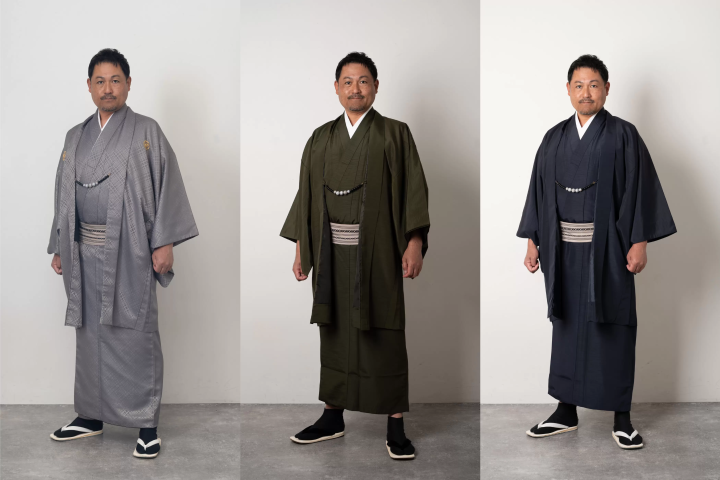
Kimono-nagashi is a casual style of attire worn by men without hakama when wearing traditional Japanese clothing. It was worn by townspeople in the Edo period as casual wear or for going out. Today, it is popular as a casual style of attire for the hot season.
Wearing the Children's Plan [Shichi-Go-San Costumes]
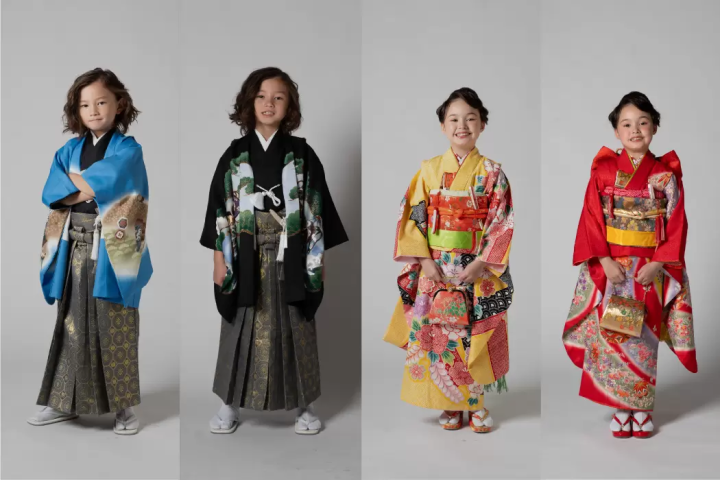
The costumes in the Children's Plan are the ones actually worn during the Shichigosan shrine visit, a traditional Japanese tradition. Shichigosan is a traditional Japanese event that celebrates the growth of children at the ages of three, five, and seven. The three and seven years of age are generally celebrated for girls, and the five year old is celebrated for boys.
It is customary to take photographs wearing kimono and hakama, and to visit shrines and temples .
The kimono worn for Shichi-Go-San are called "Yotsumi Kimono" and "Yotsumi Haori" and are made for children. The costumes worn for Shichi-Go-San are imbued with the meaning of wishing for the child's growth and happiness .
Introducing HAGOROMOYA's options!
So far, we have been introducing the costumes at HAGOROMOYA, but in this chapter we will introduce the optional plans that can be added to the basic HAGOROMOYA plan.
[Location shooting in front of the store]
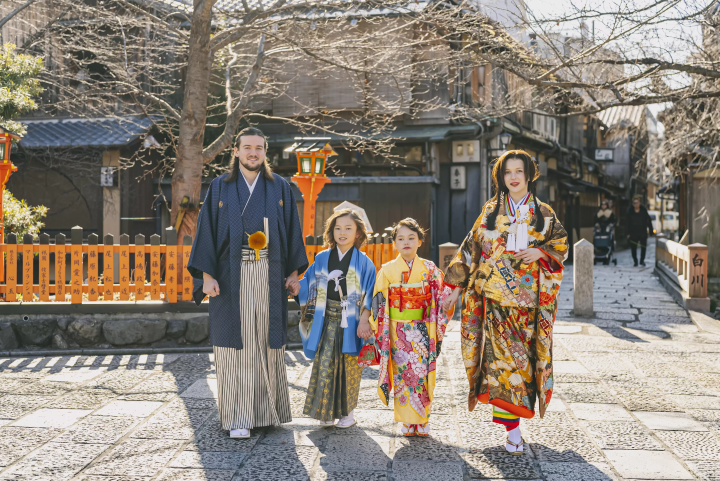
In the "location photo shoot in front of the store," you can take a special photo in traditional Japanese clothing with the historic streetscape as your backdrop. A professional photographer will be in charge of the photos, helping you to capture beautiful memories of your trip.
Why not spend a special moment in a location that beautifully accentuates your traditional Japanese attire with Kyoto's historic cityscape as your backdrop?
*Please note that you will not be able to choose the armor when taking photos at the location in front of the store.
*This option is available for couple and family plans.
This option is available until 12:00 noon.
[Rickshaw experience]
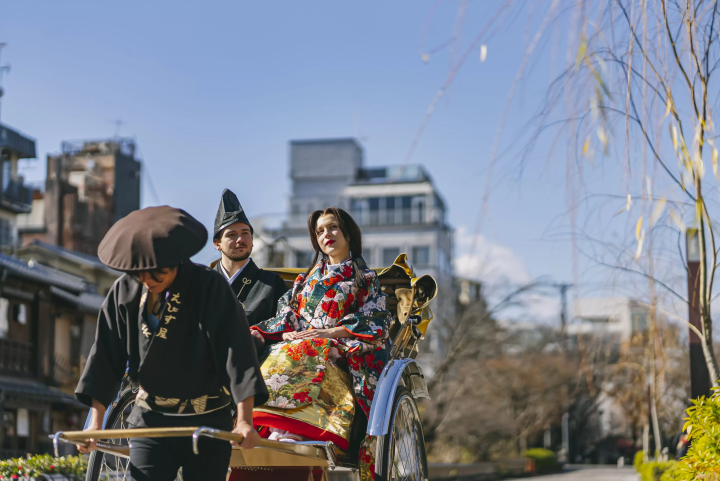
This option offers a unique experience as you explore the beautiful streets of Kyoto in a traditional rickshaw.
Enjoy a special time in a rickshaw while wearing a beautiful kimono and experiencing traditional Japanese culture. You can take photos with your own camera, so you can keep the memories of your trip forever.
*Please note that you will not be able to choose the armor for the location photo shoot in front of the store.
This option is available until 12:00 noon.
*Photos will be taken by yourself using your own camera.
Summary: Make memories of Kyoto wearing traditional Japanese clothing from HAGOROMOYA

How was it?
In this article, we introduced costumes at photo studios in Kyoto.
They offer plans to suit a variety of groups of customers, including couples and families, and also offer the opportunity to create wonderful memories by dressing up in historical Japanese clothing that everyone has probably seen before, such as kimonos, armor, and uchikake.
For more information on photography plans and reservations, please visit the official HAGOROMOYA website.
REC Co., Ltd. has been running wedding-related businesses such as "Small Weddings" and "Ravi Factory" for about 50 years, and currently supports more than 40,000 couples a year across Japan. In March 2025, we opened "Hagoromoya" in Higashiyama Ward, Kyoto City, where you can wear traditional Japanese clothing and enjoy the atmosphere of Kyoto, or take wedding photos and other photos in a variety of situations in a studio with a virtual background that recreates Japanese scenery and images. Through our track record and warm Japanese hospitality, we offer a special traditional cultural experience that has continued since the Edo period 250 years ago.
The contents on this page may partially contain automatic translation.





















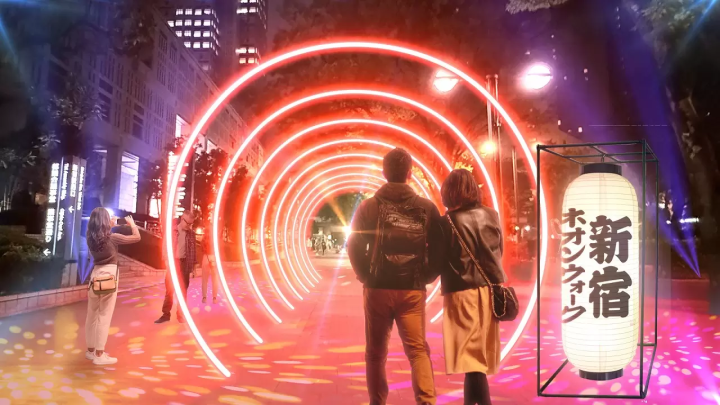
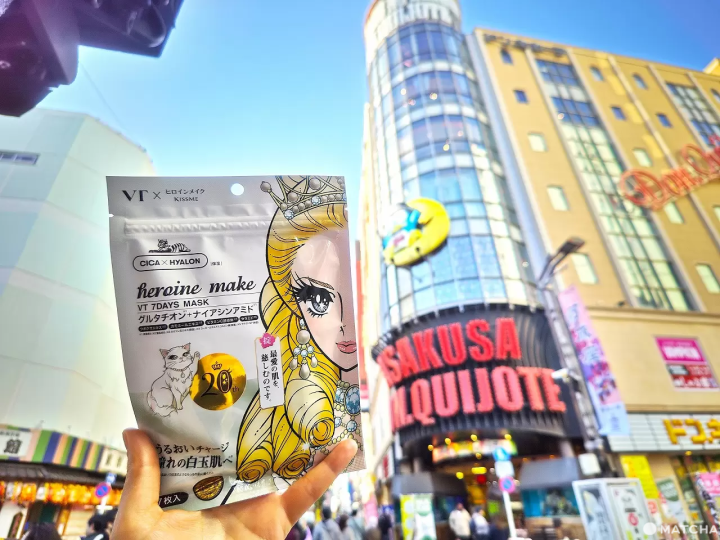
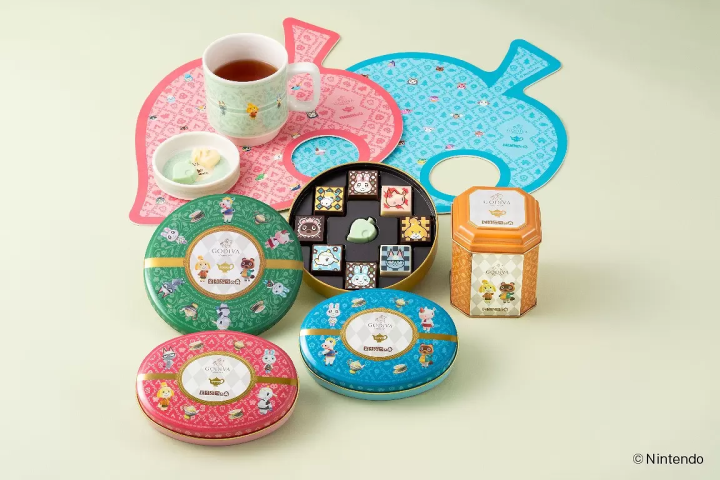
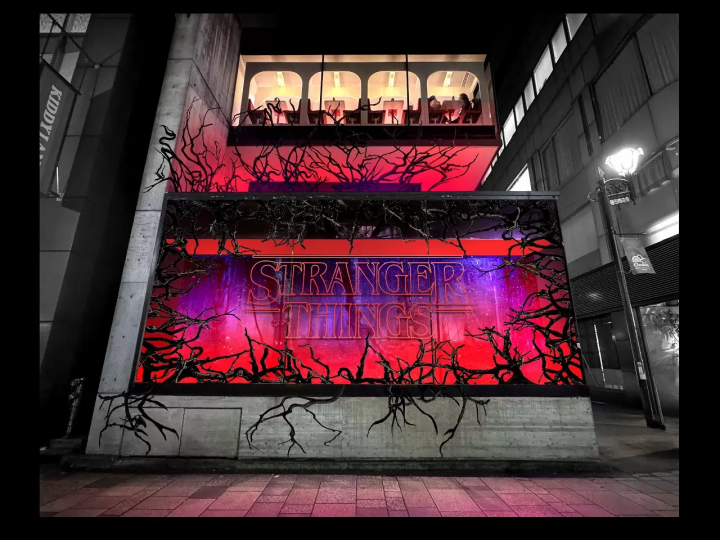
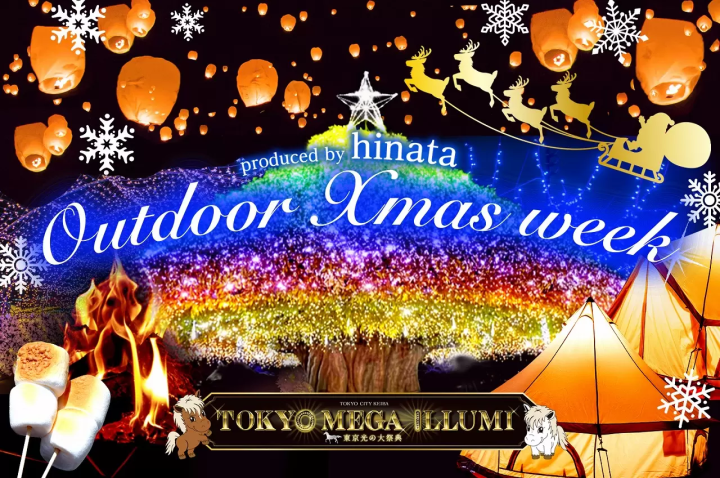
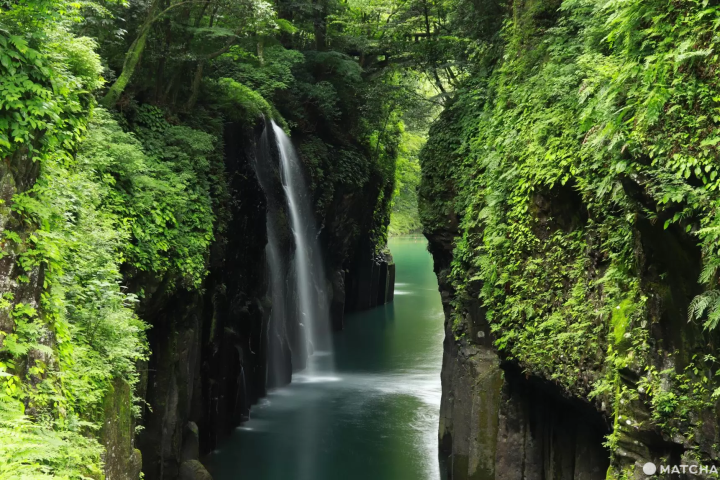




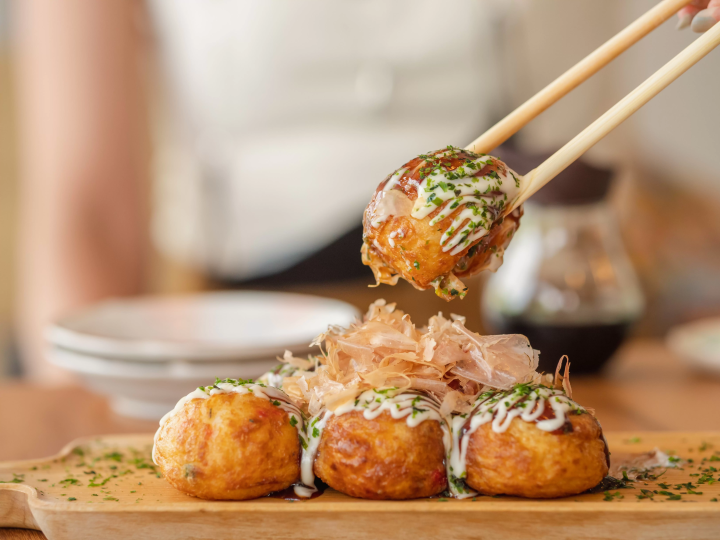
![[2026 Edition] FORMUAL 1 JAPANESE GRAND PRIX Information](https://resources.matcha-jp.com/resize/720x2000/2025/10/05-245984.webp)

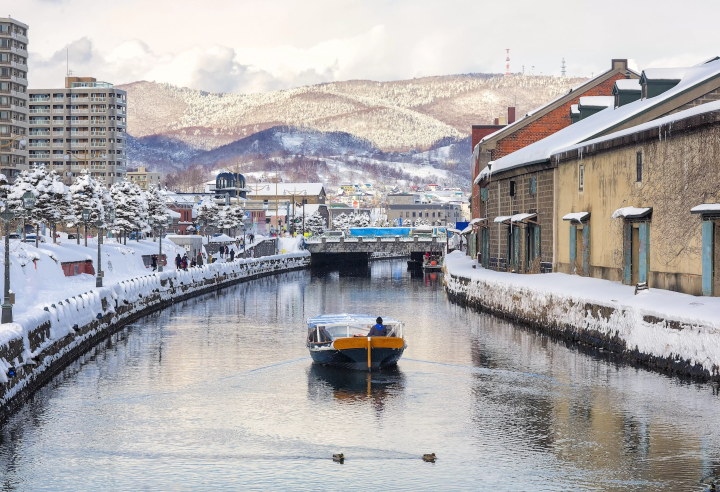
![[2025 Update] Namba's spectacular illuminations! "Namba Hikari Tabi" with approximately 1 million shining lights](https://resources.matcha-jp.com/resize/720x2000/2025/12/12-252825.webp)